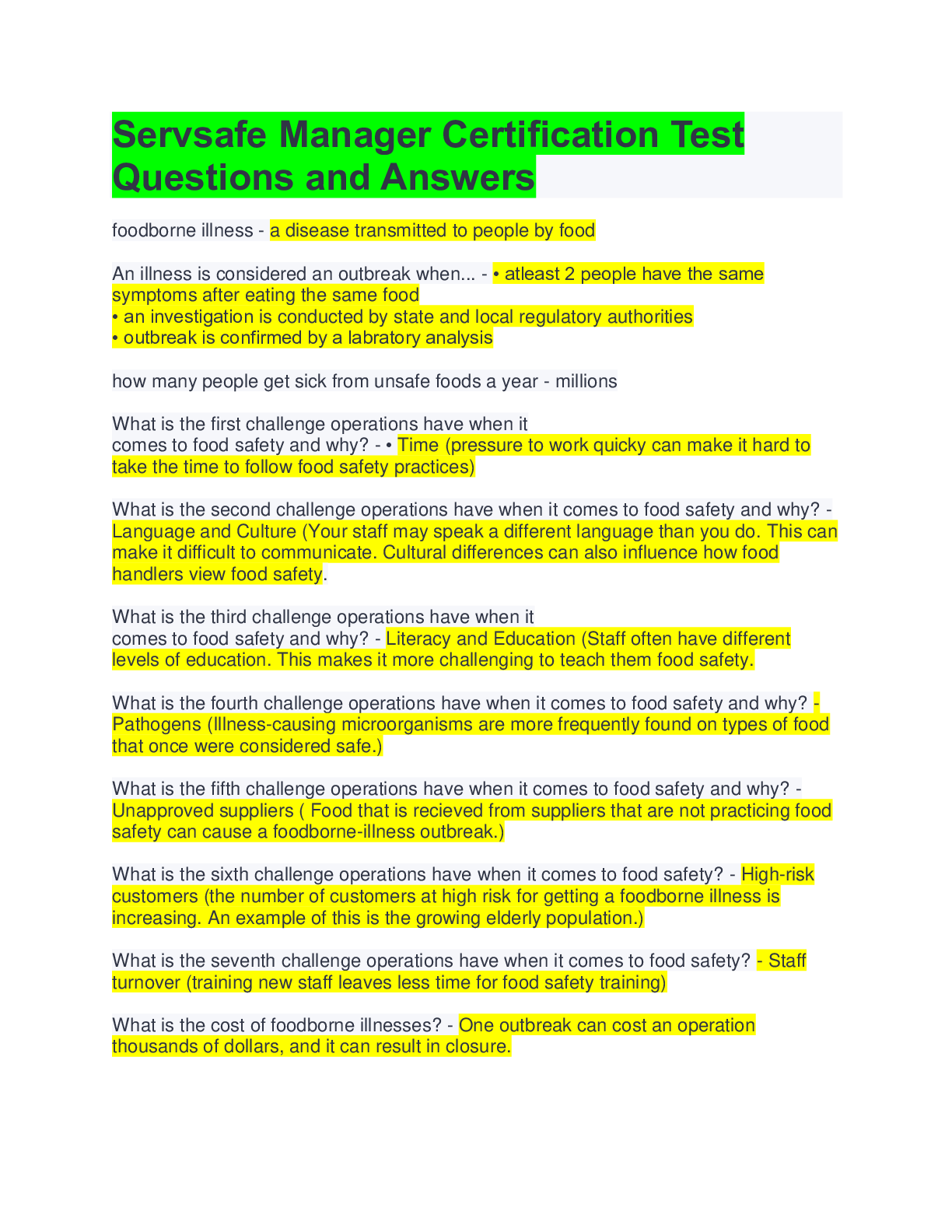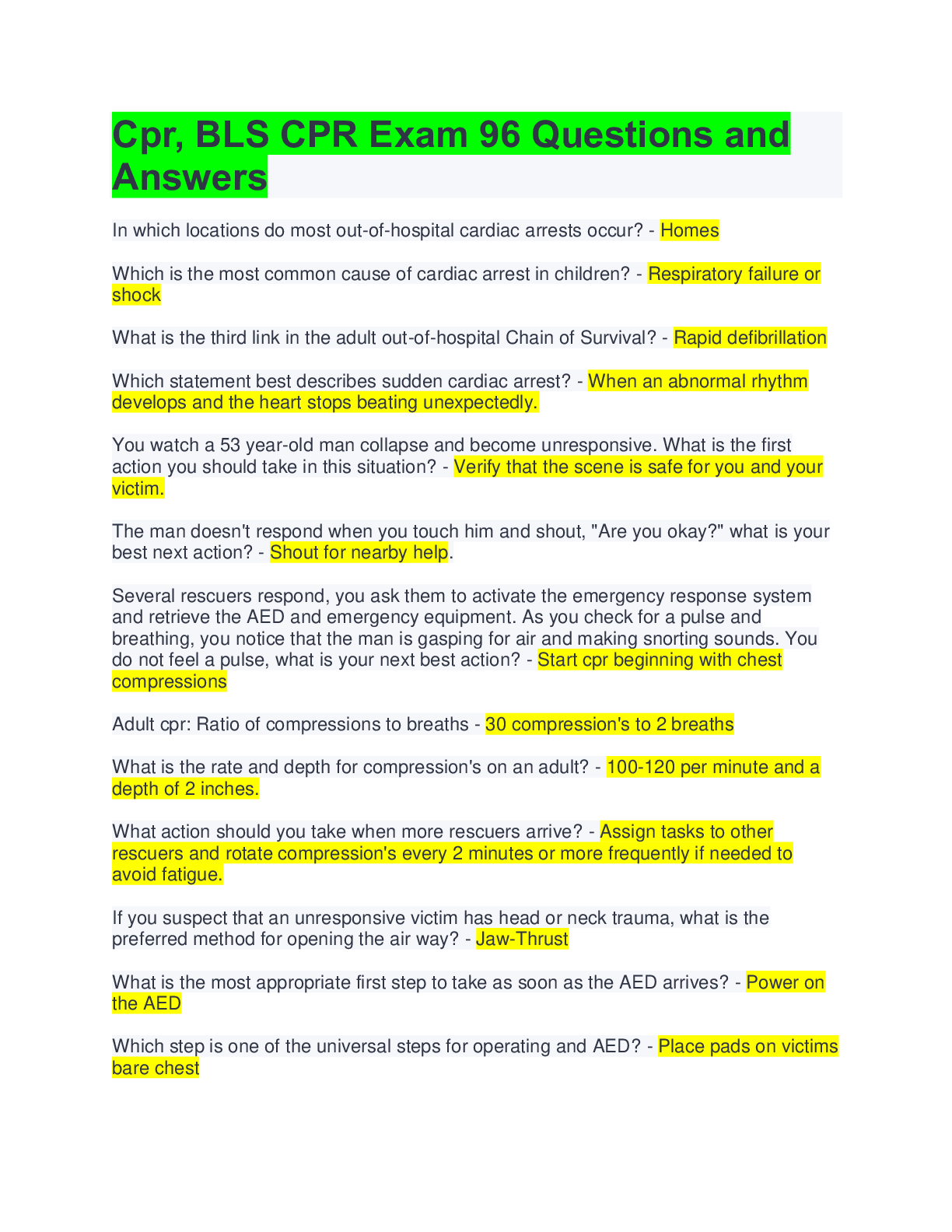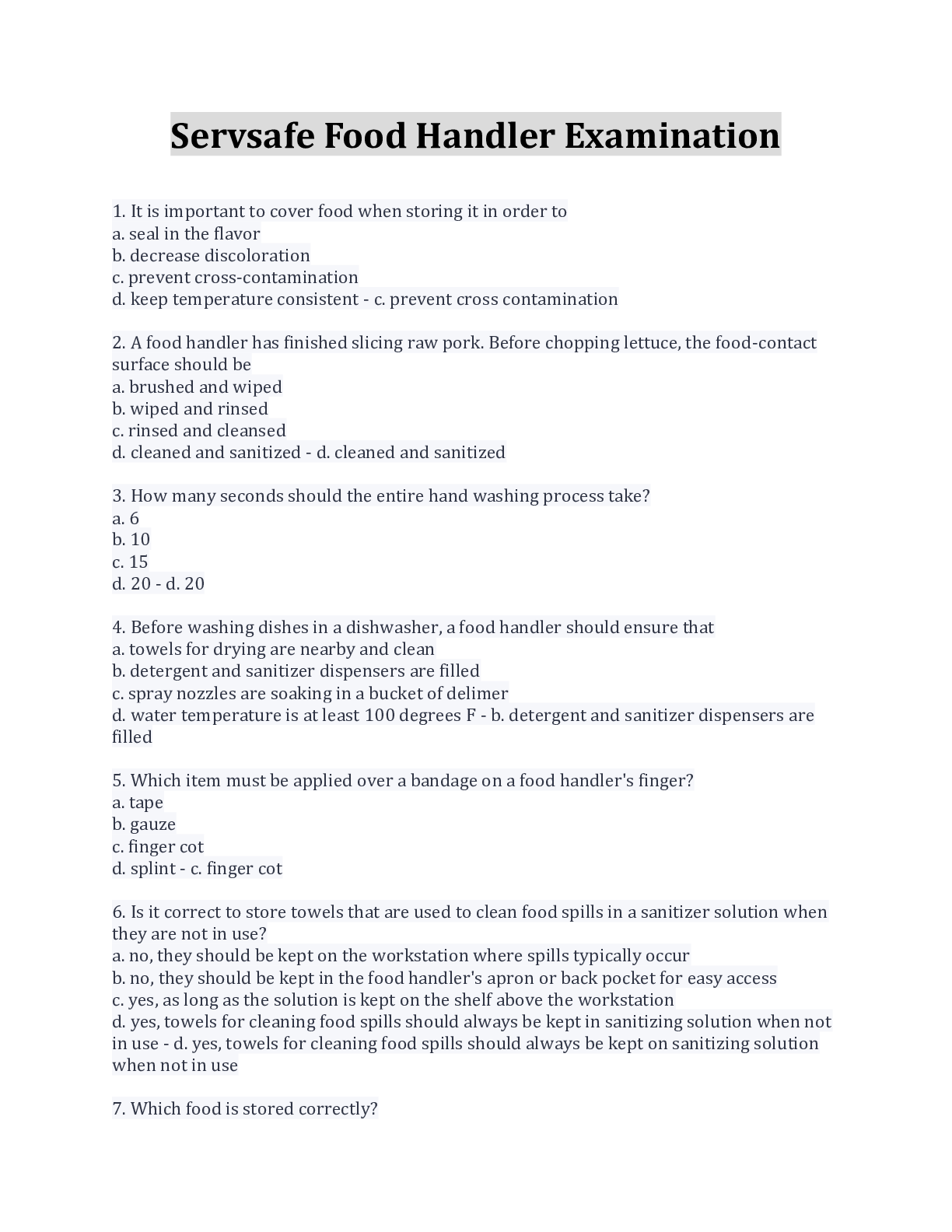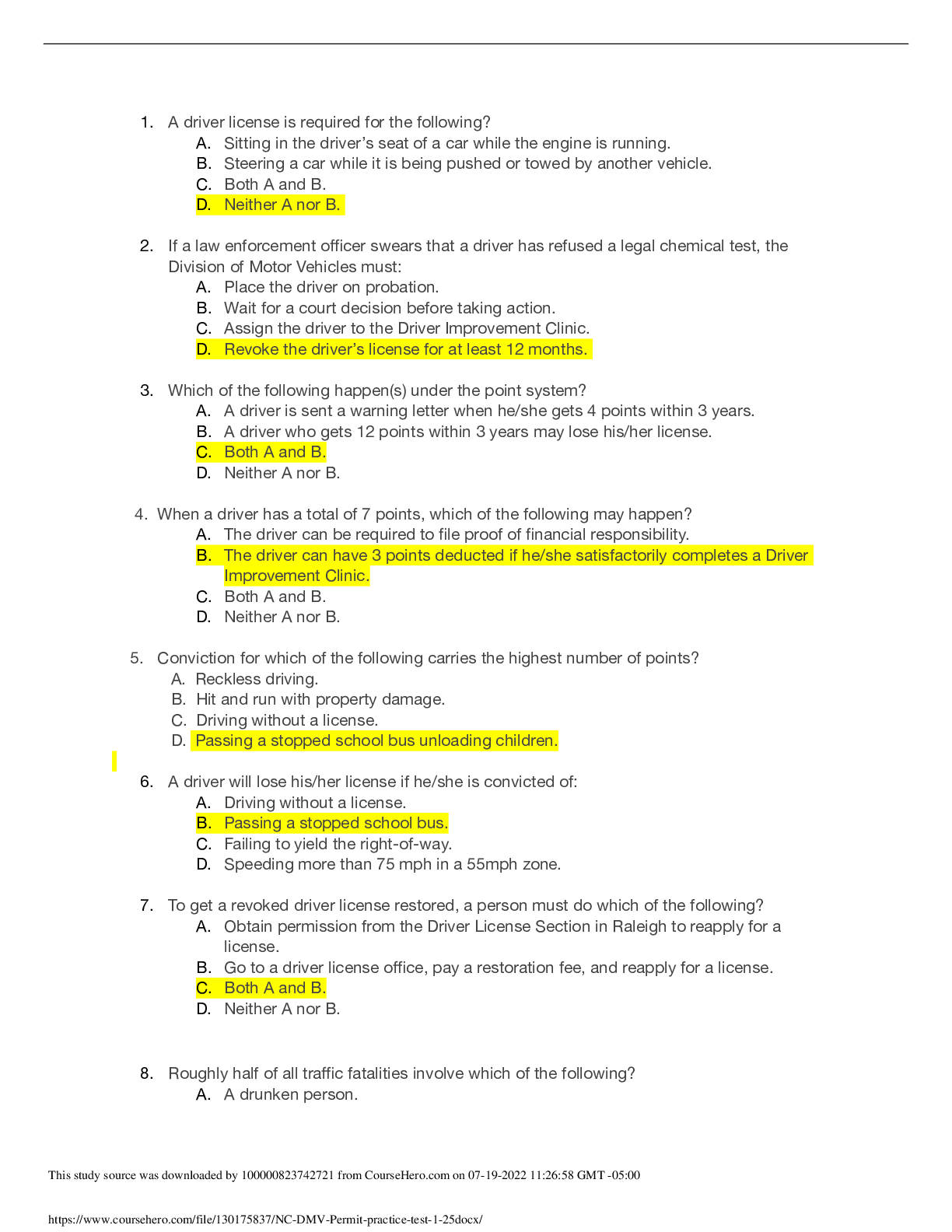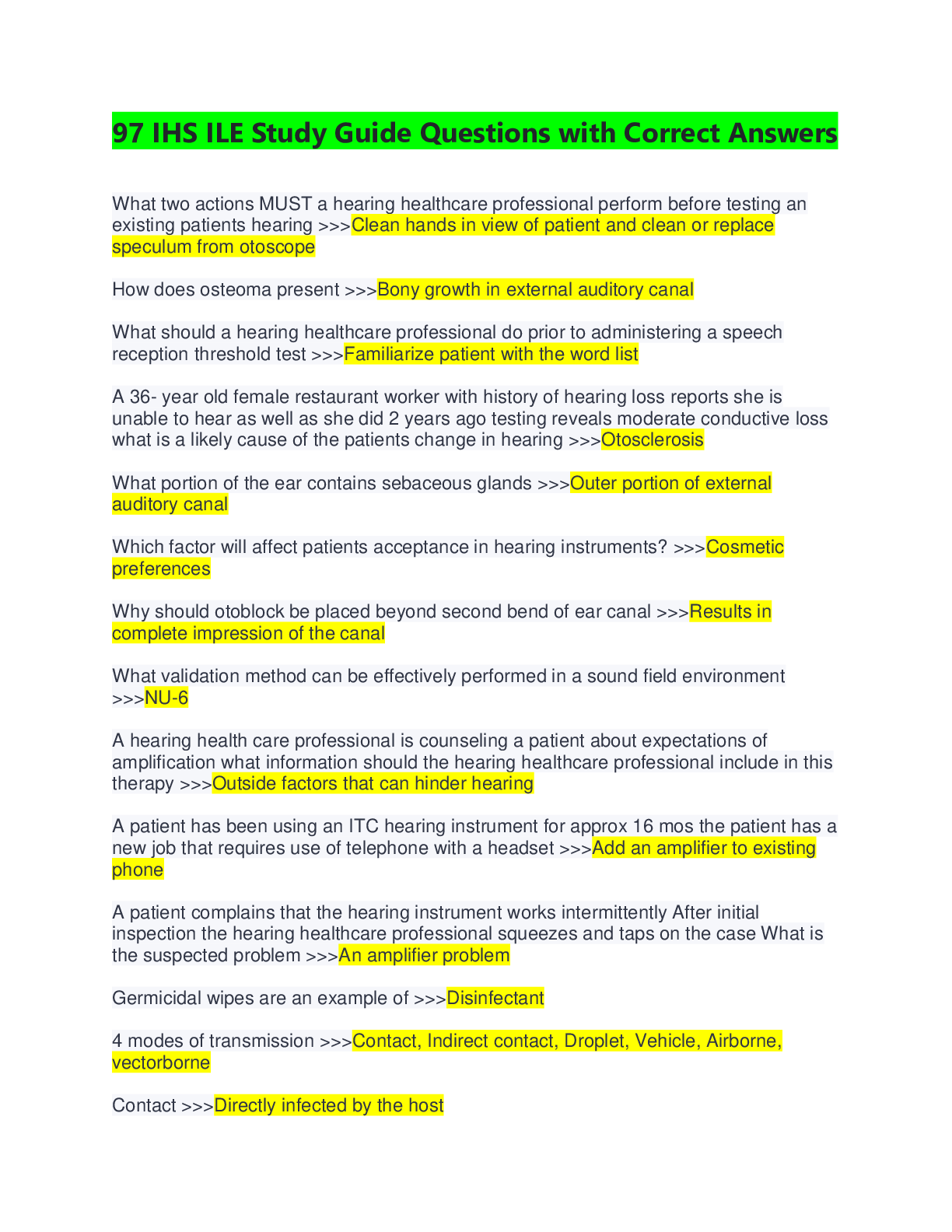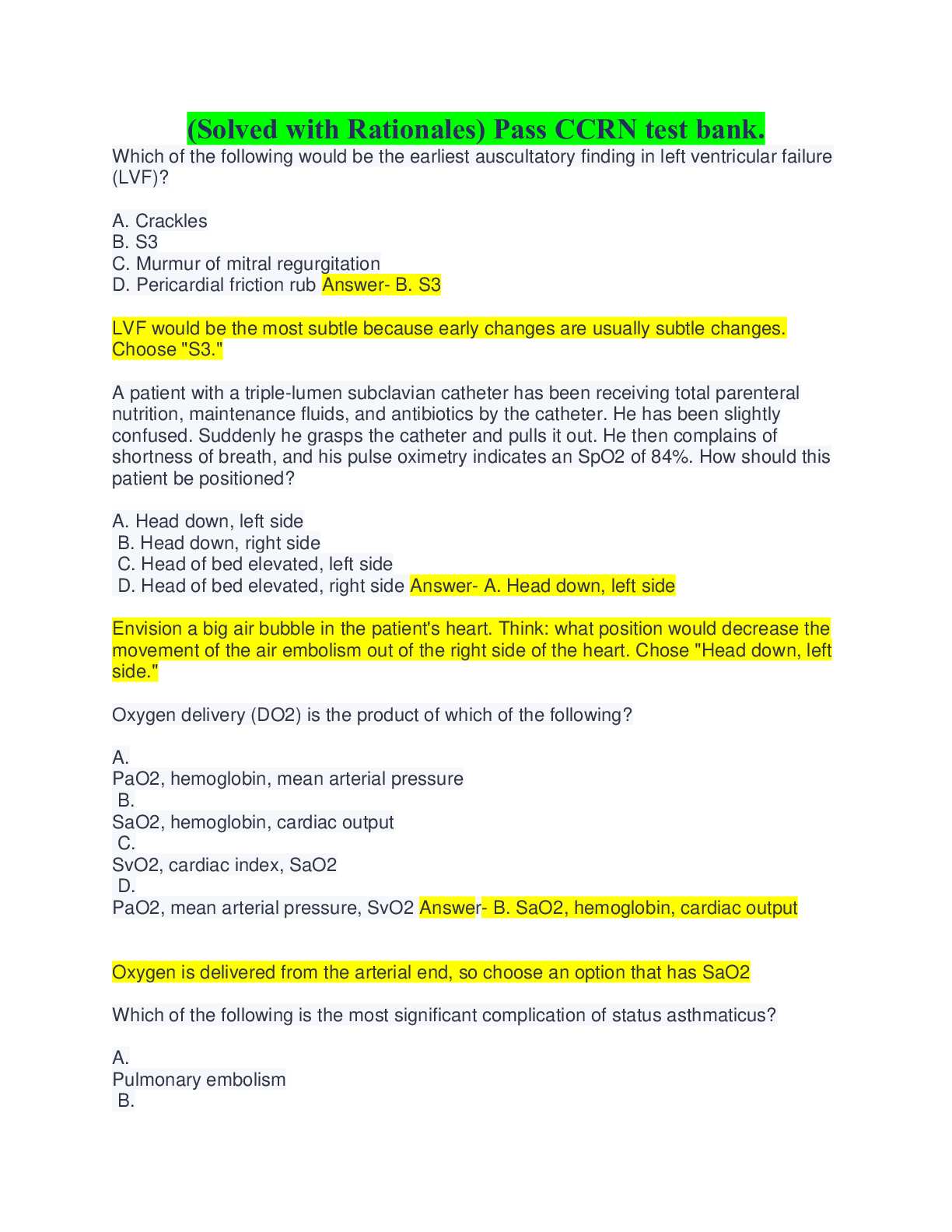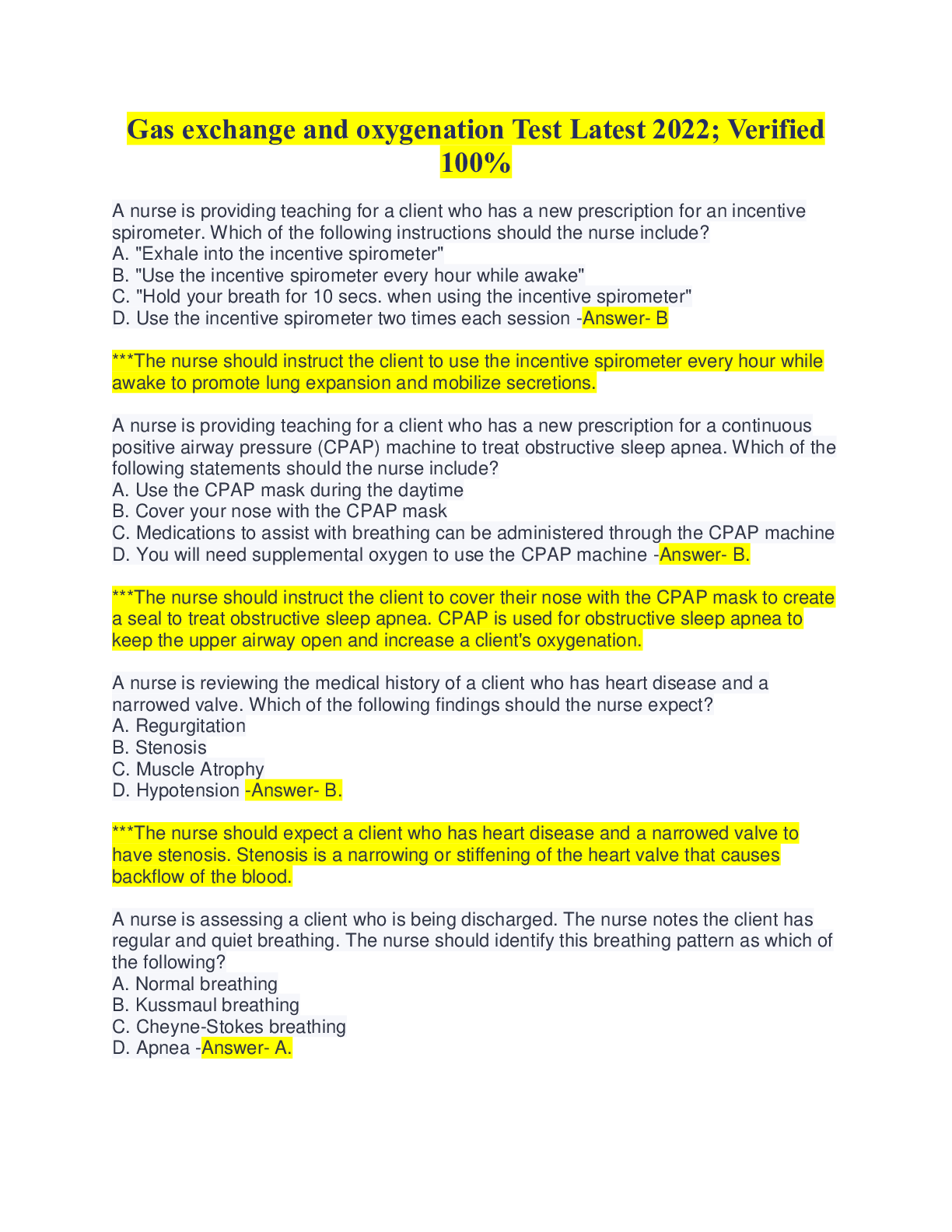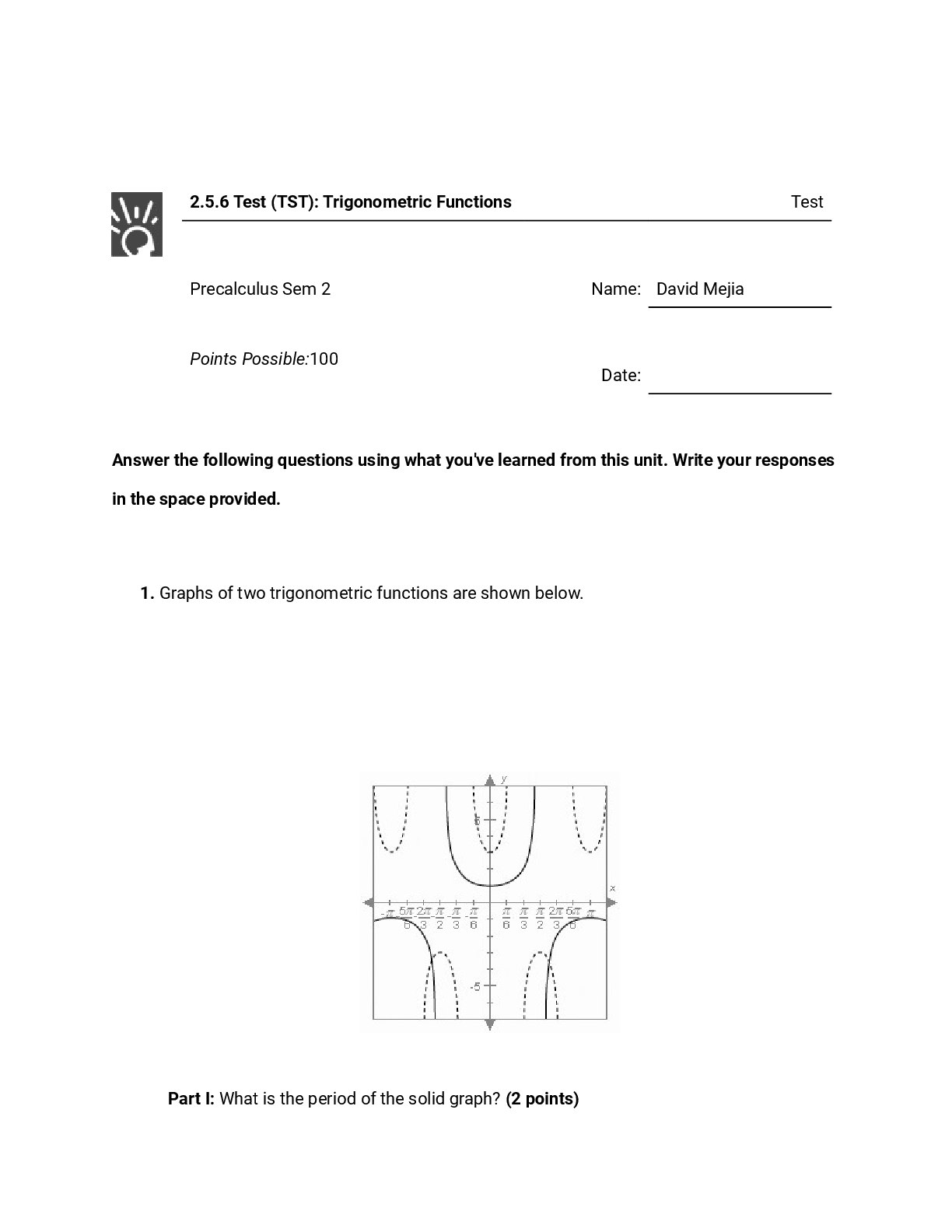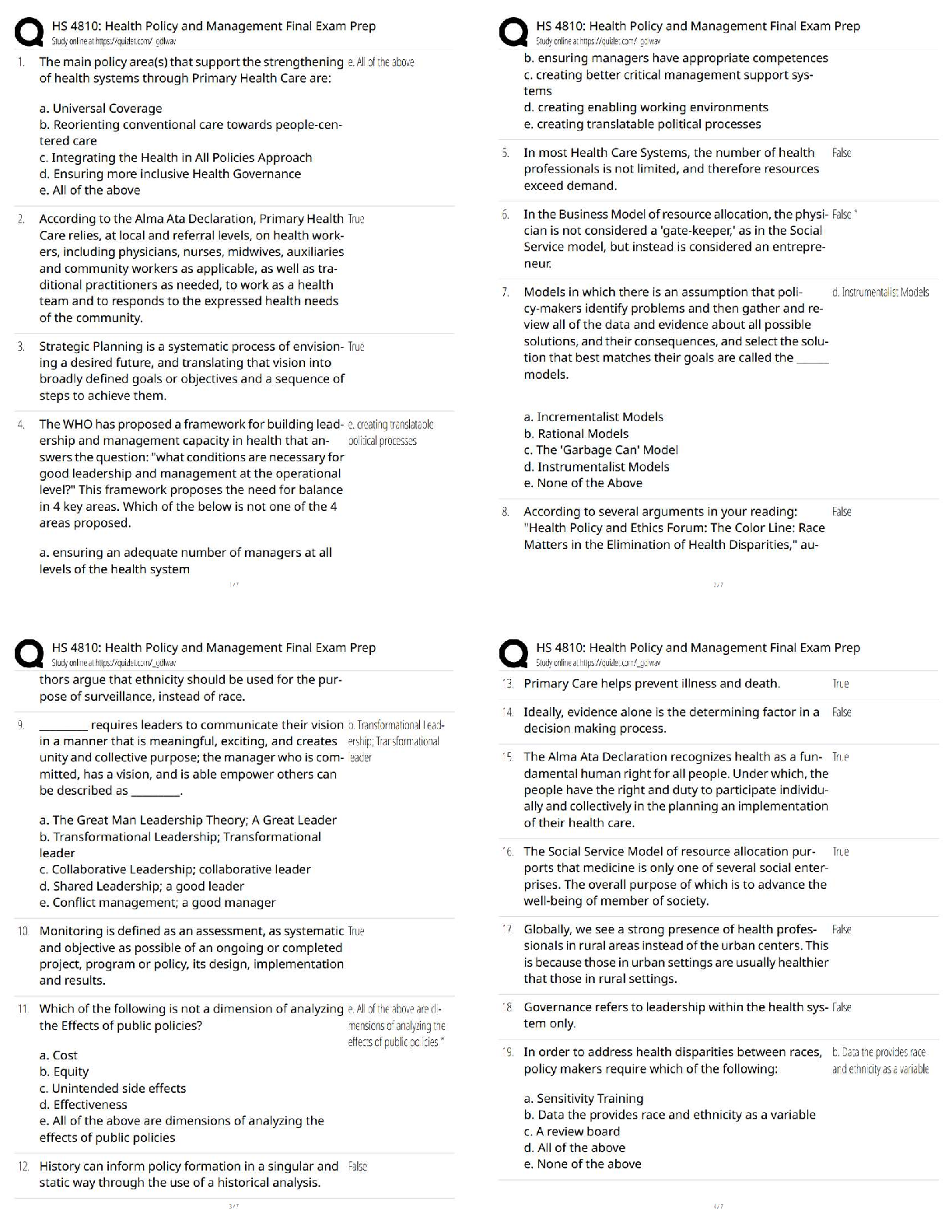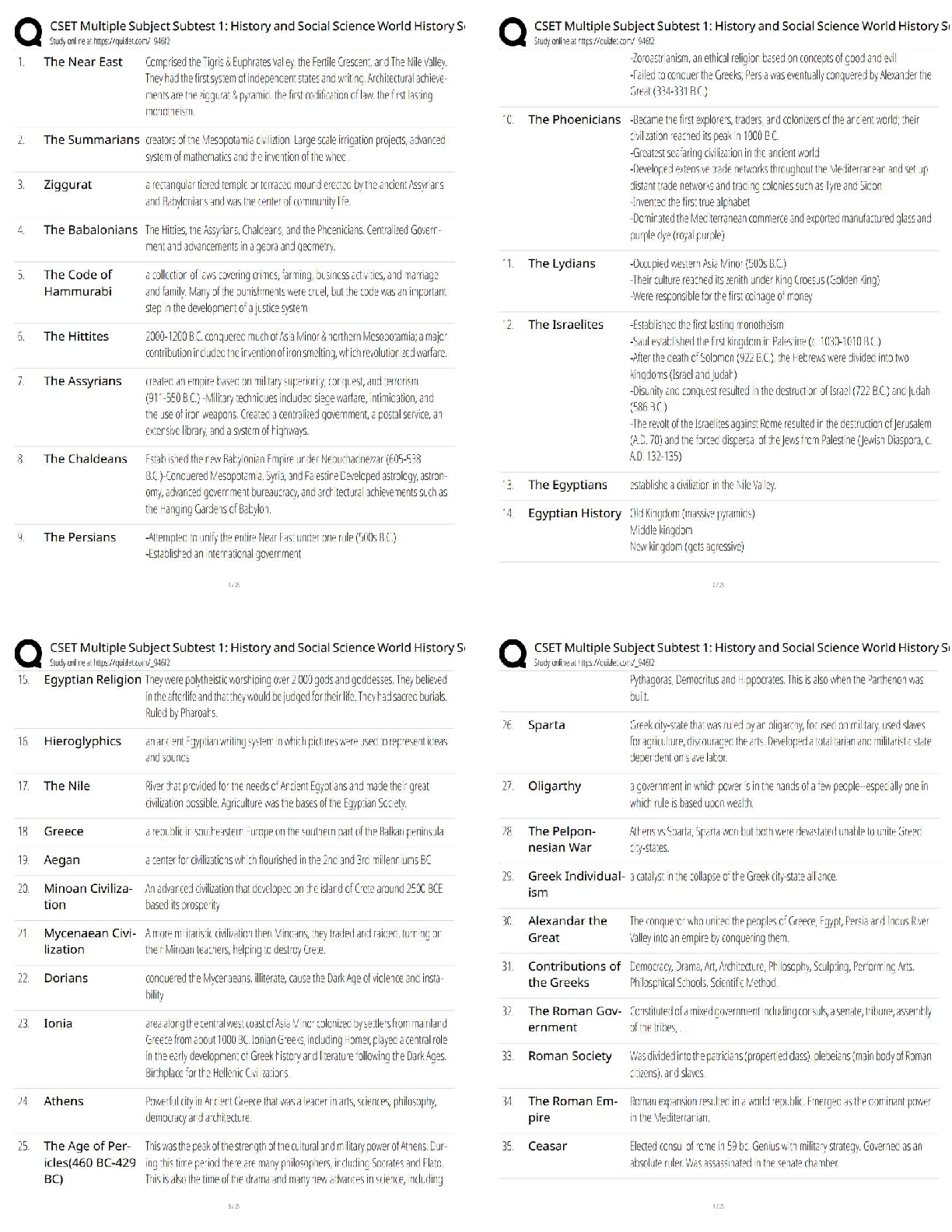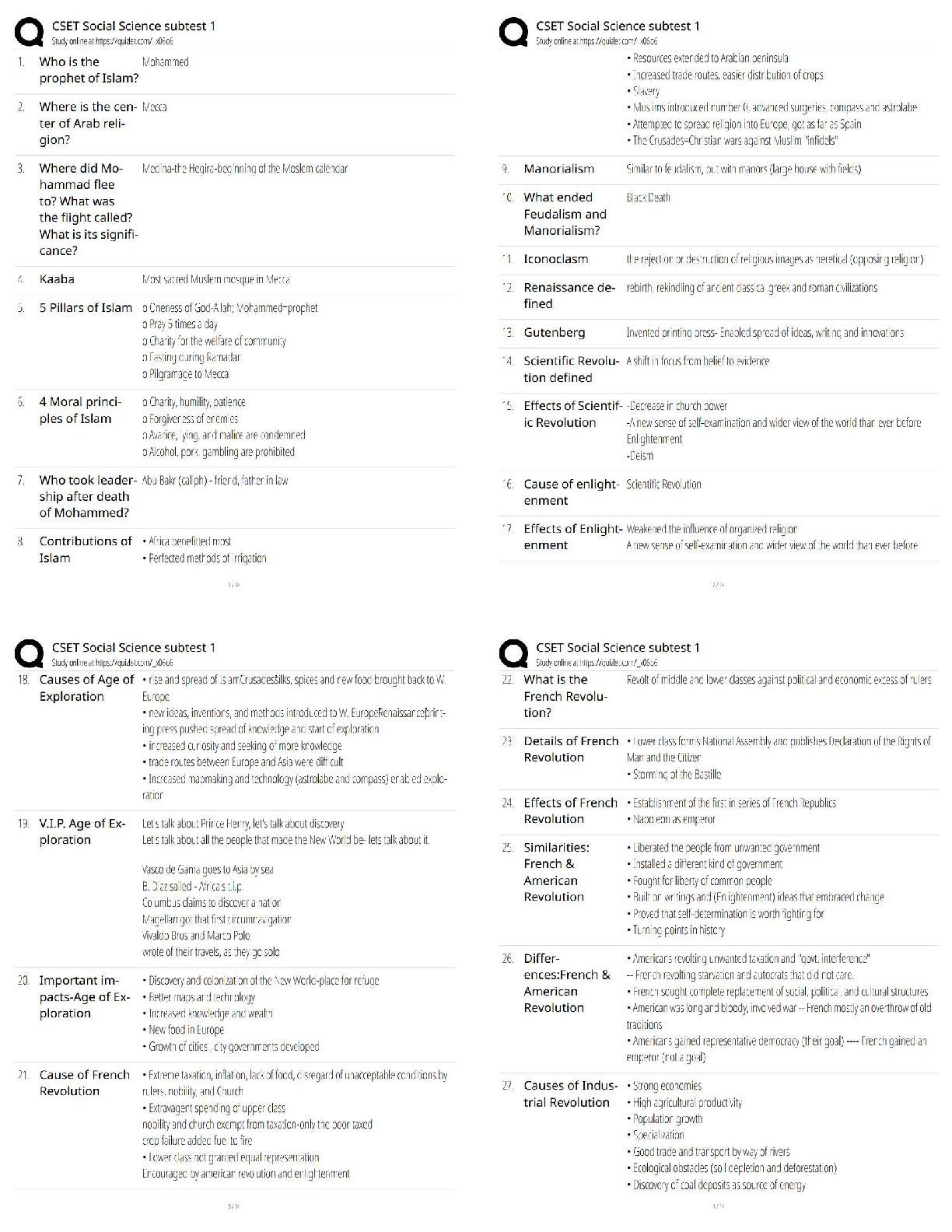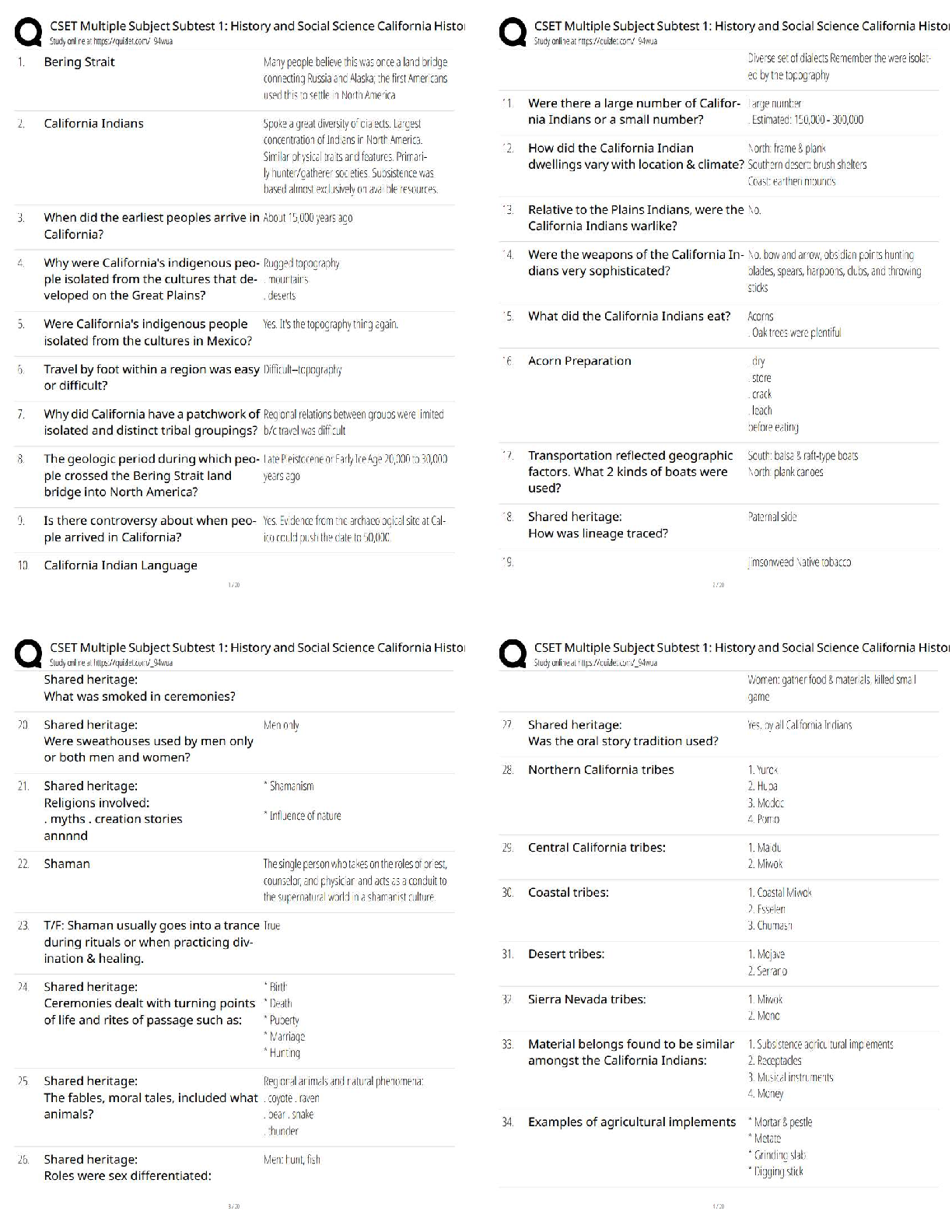Management > QUESTIONS & ANSWERS > Questions and Answers>MANAGEMENT 340Chapter 10 Understanding Work Teams 100% Score (All)
Questions and Answers>MANAGEMENT 340Chapter 10 Understanding Work Teams 100% Score
Document Content and Description Below
Chapter 10 Understanding Work Teams 1) The current popularity of teams can be attributed to the fact that ________. A) they enable quicker accomplishment of goals than individuals B) they represent ... a better way to use employee talents C) they reduce the need for coordination and supervision D) they aid the performance of simple tasks that do not require diverse inputs E) they strengthen the worth of individual teams players over the team Answer: B Explanation: B) As organizations have restructured themselves to compete more effectively and efficiently, they have turned to teams as a better way to use employee talents. 2) Which of the following statements best defines a work group? A) A work group performs at a level greater than the sum of its inputs from individual members. B) A work group interacts primarily to share information, rather than to engage in work that requires joint effort. C) A work group consists of members who work together and generate positive synergy through coordinated effort. D) A work group consists of members having complementary skills that are applied in a coordinated fashion to the task at hand. E) A work group involves individual and mutual accountability regarding results and outcomes. Answer: B Explanation: B) A group consists of two or more individuals, interacting and interdependent, who have come together to achieve particular objectives. A work group is defined as a group that interacts primarily to share information and to make decisions to help each group member perform within his or her area of responsibility. They have no need or opportunity to engage in collective work that requires joint effort. 3) Work groups are characterized by ________. A) the emphasis on generating positive synergy B) the goal of sharing information among members C) the mutual and team-based accountability for results D) the need to attain collective performance E) the availability of complementary skill sets Answer: B Explanation: B) A work group is a group that interacts primarily to share information and make decisions to help each member perform within his or her area of responsibility. They are characterized by neutral synergy, individual accountability, and the presence of random and varied skill sets. 4) The goal of work groups is ________. A) generating positive synergy B) improving collective performance C) inculcating a climate of trust D) sharing relevant information E) enhancing team efficacy Answer: D Explanation: D) A work group is a group that interacts primarily to share information and make decisions to help each member perform within his or her area of responsibility. They are characterized by neutral synergy, individual accountability, and the presence of random and varied skill sets. 5) Which of the following statements is true regarding a work team? A) Work teams are rarely used in organizations today. B) Work teams are generally less flexible than traditional departments. C) Work teams generate positive synergy through coordinated effort. D) Work teams are less responsive to changes in the internal and external environment of the company. E) Work teams involve members of random and varied skill sets. Answer: C Explanation: C) Today most of the organizations use teams. Teams are more flexible and responsive to changing events than traditional departments or other forms of permanent groupings. A work team generates positive synergy through coordinated effort. Teams facilitate employee participation in operating decisions. 6) A work team is characterized by ________. A) the goal of sharing information B) the presence of neutral to negative synergy C) the availability of complementary skills among members D) the individual accountability for outcomes and results E) the mere accumulation of individual efforts Answer: C Explanation: C) A work team generates positive synergy through coordinated effort. The individual efforts result in a level of performance greater than the sum of those individual inputs. Work teams aim at the goal of collective performance, apply complementary skills, and promote individual and mutual accountability for group results. 7) Which of the following accurately differentiates between work groups and work teams? A) Work groups are used by top-management employees, while work teams are used by lowerlevel workers. B) Work groups are used for functions relating to areas of the external environment, while work teams are exclusively used for departmental problems and issues. C) Work groups involve members who have complementary skills, while work teams use employees who have random and varied skills. D) Work teams generate a potential for an organization to generate greater outputs with no increase in inputs, while work groups cannot perform this function. E) Work teams represent the mere accumulation of individual efforts, while work groups generate a positive synergy within the organization. Answer: D 8) The extensive use of work teams benefits organizations by ________. A) generating neutral synergy among all employees of the team B) eliminating the need for mutual accountability for results C) developing the various team member's skills such that they are random and varied D) generating a potential for creating greater outputs without increasing inputs E) ensuring that the mere accumulation of individual efforts is used for group work Answer: D Explanation: D) Organizations are looking for positive synergy that will allow the organizations to increase performance. The extensive use of teams creates the potential for an organization to generate greater outputs with no increase in inputs. 9) A team consists of employees from the same department who meet for a few hours each week to discuss ways of improving the work environment but they do not have the authority to unilaterally implement any of their suggestions. This is most likely to be a(n) ________ team. A) cross-functional B) virtual C) self-managed work D) problem-solving E) independent Answer: D Explanation: D) In a problem-solving team, members share ideas or suggest how work processes and methods can be improved; they rarely have the authority to unilaterally implement any of their suggestions. 10) Problem-solving teams can ________. A) implement the recommended changes to resolve a problem B) assume responsibility for the outcomes of a solution they implemented C) provide recommendations after a discussion amongst department members D) resolve problems of different departments in an organization simultaneously E) combine the expertise of employees across different divisions and organizational levels Answer: C Explanation: C) In a problem-solving team, members share ideas or suggest how work processes and methods can be improved; they rarely have the authority to unilaterally implement any of their suggestions. Problem-solving teams only make recommendations. 11) The supervisors of the production division of one of the branches of Georgia Mills have been informed of some irregularities noticed in inventory of raw materials by some trusted subordinates. To get a clearer picture, the supervisors had a quick meeting with the subordinates who reported the matter over lunch. The subordinates recommended rotating the schedule of employees who account for the incoming and used up stock so as to pinpoint the defaulting employee. The supervisors agreed that this was a good strategy but admitted that the matter must be escalated to the production manager before such a change can be implemented. They followed up this meeting with subsequent sessions to evaluate how the change worked. The supervisors and subordinates form a(n) ________ team in this scenario. A) cross-functional B) independent C) problem-solving D) virtual E) self-managed Answer: C Explanation: C) In a problem-solving team, members share ideas or suggest how work processes and methods can be improved; they rarely have the authority to unilaterally implement any of their suggestions. 12) ________ teams are defined as groups of employees who perform highly related or interdependent jobs and take on many of the responsibilities of their former supervisors. A) Independent B) Self-managed work C) Cross-functional D) Problem-solving E) Traditional Answer: B Explanation: B) Self-managed work teams are groups of employees who perform highly related or interdependent jobs and take on many of the responsibilities of their former supervisors. 13) Nick, the director of manufacturing at a large electronics company, has created a team of eleven employees from quality control for working on high priority projects. Nick gives the team members the responsibility of planning and scheduling their own work, and making all functional decisions. Also, members of this team evaluate each other's performance. This is an example of a ________ team. A) problem-solving B) self-managed work C) cross-functional D) virtual E) task-resolution Answer: B Explanation: B) Self-managed work teams are groups of employees who perform highly related or interdependent jobs and take on many of the responsibilities of their former supervisors. These tasks are planning, assigning tasks to members, making operating decisions, taking action on problems, and working with suppliers and customers. 14) Which of the following statements is true regarding self-managed work teams? A) Self-managed work teams typically consist of forty to fifty employees. B) Self-managed work teams typically manage conflicts well. C) Members of self-managed work teams typically report lower job satisfaction. D) Self-managed work teams are typically composed of employees from different departments who work independent of each other. E) In the case of self-managed work teams, supervisory positions take on decreased importance. Answer: E Explanation: E) Self-managed work teams are groups of employees (typically ten to fifteen in number) who perform highly related or interdependent jobs and take on many of the responsibilities of their former supervisors. Supervisory positions take on decreased importance and are sometimes even eliminated. Self-managed teams do not typically manage conflicts well. Members of this team report higher levels of job satisfaction than other individuals. 15) Which of the following teams is more likely to be made up of employees from about the same hierarchical level but different work areas? A) problem-solving B) self-managed work C) cross-functional D) traditional E) departmental [Show More]
Last updated: 3 years ago
Preview 1 out of 20 pages
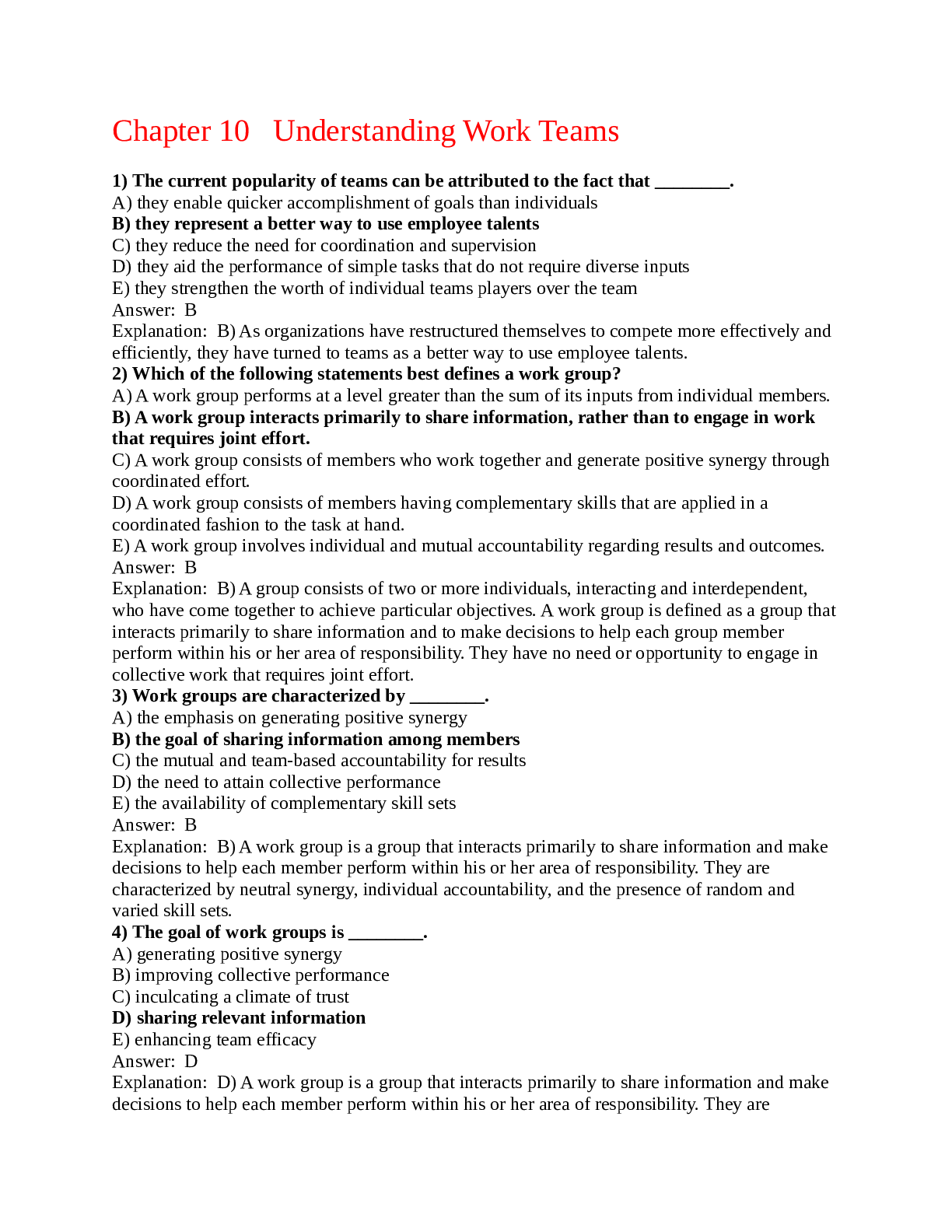
Buy this document to get the full access instantly
Instant Download Access after purchase
Buy NowInstant download
We Accept:

Reviews( 0 )
$10.00
Can't find what you want? Try our AI powered Search
Document information
Connected school, study & course
About the document
Uploaded On
Aug 13, 2021
Number of pages
20
Written in
All
Additional information
This document has been written for:
Uploaded
Aug 13, 2021
Downloads
0
Views
76



